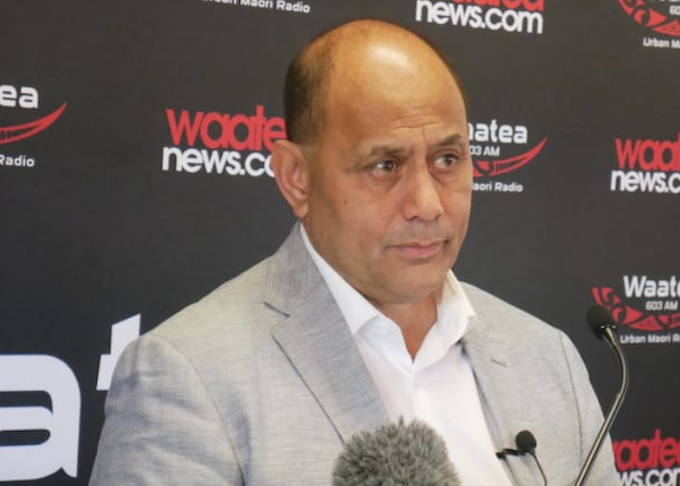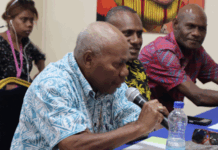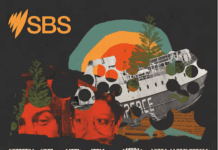
Axing the proposed merger of TVNZ and RNZ saved the New Zealand government a significant amount of money but left it with the problems the merger was supposed to fix. Newsroom co-editor Mark Jennings looks at Labour’s new slimmed down approach to public media.
ANALYSIS: By Mark Jennings
Until weeks ago, the future of Aotearoa New Zealand’s public media organisations was looking so grim the government was prepared to spend $370 million over four years to merge TVNZ and RNZ and future proof the new entity it was calling ANZPM.
Last December, when the merger plan was under intense scrutiny, then Prime Minister, Jacinda Ardern said RNZ “could collapse” if the merger did not go ahead.
Last week, Labour unveiled a very modest plan to strengthen public media. The old, very expensive one, had been thrown on the policy bonfire back in February.
The “burn it” decision had been widely anticipated after new PM Chris Hipkins’ started dumping unpopular policies to focus on cost of living issues.
Broadcasting Minister Willie Jackson stayed on message when he released the new public media plan last week. “We have listened to New Zealanders and now is not the right time to restructure our public media.”
Under the new plan RNZ will get $25 million more a year, NZ On Air will get a one-off boost of $10m for 2023/24 and TVNZ will get nothing.
Jackson claims the extra money will “deliver world class public media for all New Zealanders.” This seems improbable given the earlier dire predictions.
The additional $25 million a year for RNZ represents a 60 percent increase in its funding. It sounds a lot but the broadcaster has been under resourced for the past 15 years.
Coping with pandemic
When National came to power in 2008 it froze RNZ funding for 9 years. The state broadcaster did get an increase from the Ardern government but it has had to contend with the additional costs of reporting on and coping with the covid-19 pandemic.
Lately, the demands of covering the Auckland floods and cyclone Gabrielle have stretched it further. Newsroom understands RNZ is currently running a deficit of close to $5 million.
The lack of funding is illustrated by the rundown premises RNZ occupies nationwide, its ageing equipment and out-of-date IT systems. Under constant financial pressure it has struggled to attract and keep top journalists.
Some of its best and brightest have been lured away to TVNZ, Newshub, Newsroom and Stuff.
Jackson’s media release said $12 million of the extra funding was for current services and $12 million for a new digital platform. $1.7 million is to support AM transmission so people can access information during civil emergencies.
Stuff, the NZ Herald and RNZ itself all reported (presumably from the media release) on the funding for the new multimedia digital platform. But there is no new platform. This was either clumsy language or a clumsy attempt at spin from Jackson and his comms people.
RNZ’s chief executive Paul Thompson told Newsroom the money would be used to make improvements to RNZ’s existing web platform and mobile app.
‘Fixing things’
“It is kind of fixing things that should have been fixed a long time ago. Our website and app are serviceable and do a good job but if we are going to be relevant in the future we need to be better than that.”
Thompson says the increase in the amount of baseline funding was calculated to restore RNZ to its former state, more than anything else.
“How much would it take us to stabilise our current operations and get them to where they need to be, so that’s well overdue. It is everything from our premises through to our content management systems, to our rostering — just having enough staff to do the job we do. It’s sufficient but we are going to have to spend every penny very wisely.”
A big part of the government’s reasoning for the merger was that minority audiences are under-served by the media.
Jackson now seems to expect RNZ to do the heavy lifting in this area. His media release quoted him saying the funding would allow RNZ to expand regional coverage and establish a new initiative to prioritise Māori and Pacific coverage.
Asked how he planned to do this, Thompson was circumspect. “It has got to be worked out . . . we are going to have to prioritise, we can’t do it all at once.”
Jackson wants other media to play an (unspecified) role in reaching these audiences. He has restored $42 million of funding to NZ On Air. Under the merger plan this money, which was the amount NZOA spent funding TVNZ programmes (mainly drama, comedy and off-peak minority programmes), was being handed to ANZPM to decide how it should be spent.
Production community upset
The local TV production community was upset by this as it far preferred NZ On Air to be the gatekeeper and not TVNZ executives who would likely end up working for the merged organisation.
Jackson has also given NZOA a one-off boost of $10 million for 2023/2024.
“The funding will support the creation of high-quality content that better represents and connects with audiences such as Māori, Pasifika, Asian, disabled people and our rangatahi and tamariki. It is vital that all New Zealanders are seeing and hearing themselves in our public media,” he said in his media release.
One-off funding can be of limited benefit. It usually has to be project-based rather than supporting ongoing programming and the staff that go with it. It is possible Jackson is hoping or expects NZ On Air to use more of its baseline funding to sustain new shows and programmes for minorities.
On the same day as Jackson’s announcement, but with less fanfare, NZOA released its own revised strategy.
The document says, above all, funded content must have a “clear cultural or social purpose.”
Priority will be given to songs and stories that contribute to rautaki (strategy for) Māori, support a range of voices and experiences, including those of people from varying ages, races, ethnicities, abilities, genders, religions, cultures, and sexual orientations.
Unclear about TVNZ
It is unclear where Jackson’s plan B leaves TVNZ. Throughout the merger discussions TVNZ executives, while saying they embraced the idea, were critical of the draft legislation, the level of independence the new entity would have and they often emphasised TVNZ’s commercial success.
Jackson has, on a number of occasions, linked TVNZ to the National Party which opposed the merger and was committed to rolling it back if elected in October.
When he became frustrated in an interview with TVNZ’s Jack Tame, before the merger was abandoned, Jackson used the line “your mates in National”.
During question time in Parliament last week, when asked what more he was doing to strengthen public media, Jackson said he was going to “sit down with Simon and the National Party mates over there.”
He was referring to TVNZ CEO, and former National Party minister, Simon Power.
Jackson said he wanted TVNZ to play a more active role in public broadcasting and, “we are going to traverse things with Simon in terms of a way forward.”
Power recently announced his resignation and will leave TVNZ in June. With many of the TVNZ board, including its influential chair Andy Coupe, likely to retire or be replaced in the next month, Jackson will, in reality, be sitting down with a new board and CEO to discuss his public media ambitions for TVNZ.
If he is interested in the job, RNZ’s Thompson must now be in with a real chance.
Thompson unequivocally endorsed the merger idea and was almost the only advocate able to clearly articulate its benefits. A new board, eager to take the company in a direction more sympathetic to its owner’s vision, might find that attractive.
Mark Jennings is co-editor of Newsroom. Republished with permission.












































